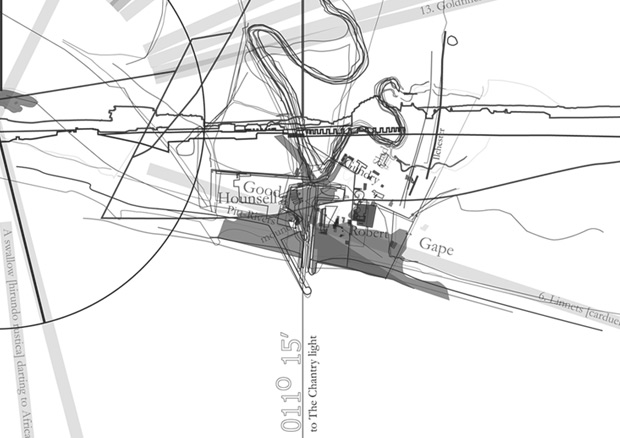- Robert Colbourne
- About
- Working
- Loading Bay Pocket Park
- Exchange
- 29-32 Mary Street
- King Edward VI Sixth Form College
- Tamed [Flood Management Scheme]
- Smithfield Site
- Frames - King Edward VI College
- James Watt Campus, Birmingham Metropolitan College
- Kemble Airfield
- Fargo
- Woodthorne Residential Housing Development
- Muchall Grove Housing Development
- Gravesend
- Meshwork Worcester
- Quadrant, Network Rail National Centre
- 20ft to an Inch [Sustrans]
- Birmingham Coach Station, Digbeth
- South Wolverhampton and Bilston Academy
- Longton Plots
- Pride of Place, West Bay
- Darwin Hall
- Light in Benmore - Optima Housing Association Art-as-Maintenance Report
- Smithfield 1 Proposal
- Interchange
- Turning Wall
- Springfield Brewery
- Constellations, Optima Housing Association
- AFC Telford United
- Stourport Day Book
- Stourport markers
- Changing Landscapes
- Rea Park, Digbeth
- Rea Crossing, Digbeth High Street
- Green Bridge Feasibility Project
- BryantPriestNewman 10
- Longhouse CPD, Confluence and Mythe
- Landscapainting
- Rd
- At any specific
Entwining Lines, Bridport and West Bay, Dorset [2010 - ]
Research, development and costing of an activity based proposal to place arts practice at the heart of a local interpretation initiative funded by Discover West Bay Pride of Place Award. With Dr Tom Brereton, Alice Martin, Hilary Bosworth and Arts Officer Cleo Evans.
The Discover West Bay Notebook blog features passport notebooks, initial research and drawing.
The mapped results of the three final walks for Entwining Lines can be seen here. See below for a project description.

Entwining Lines is a process of discovering what is so important and special about the West Bay area. It is essentially an ongoing series of explorations into a place. I originally envisioned it as a project for the Discover West Bay group to eventually emulate the positive change made by the West Bay Land and Building Company, created in the 19th Century by Archaeologist Lieutenant-General Augustus Pitt-Rivers, Henry Edward Fox-Strangeways and other entrepeneurs. It seemed a nice idea to reinterpret the idea of a group of people sharing ideas and contributing to 'building' a great future for the area.
To understand a place is to study it in lots of different dimensions. It is an incredibly complex thing to do and not something a person can do alone. So we began by walking together. West Bay has a wealth of experts in local history, geology and ecology. We asked questions - how do we experience this place? How might these dimensions entwine like strands of cordage and rope to to allow for a better understanding of it?
Something stuck in my mind from a walk around the bay with local geologist Sam Scriven. As we studied the cliff faces and fallen fragments, he told me "I comprehend time through looking at events. Sometimes an event takes millions of years [or] maybe sometimes a few seconds". I began to see this statement having more to do with just geology alone. Everything became an event, from the scold of a dunnock in a hedgerow, to the building of a new harbour, to the building, tilting, faulting and eroding of the hillsides. It all connected in a moment of conversation on the fault-line.
So we planned three walks to provoke these conversations between different people with different ways of seeing things. We knew some people liked seeking things out, others liked stumbling across them and some people shadowed others in their investigations. Therefore each walk involved myself, an expert in their field and a group of others comprised of seekers or shadowers. We would all hopefully stumble across new things, or find interesting spots, through mapping the area together. After collecting the results of the walks I began drawing a plan to see how the information could be creatively arranged together. Connections began to arise. Lines entwined things; scale ceased to be important. Bird paths became a compass or a triangulation point. One family name connected rope to shipbuilding to emigration to Newfoundland. It then seemed obvious to us to map objects from the museum collection into this, at an exhibition at the Methodist Church, a place that cries out to be a site for gathering information, interpretation and collaboration; a hub for all sorts of activities. On the shifting shingle there might be no beginning, no end, no scale, and no boundaries to the exploration.
Perhaps we are right back to the endeavours of Augustus Pitt Rivers. His style of archeological arrangement was a revolutionary innovation in museum design. Maybe we can continue to develop a new way of arranging things, interconnecting ideas and creating events, so that the culture of West Bay, by its very nature is about getting others involved, understanding the past and present, and intelligently informing positive change over time.